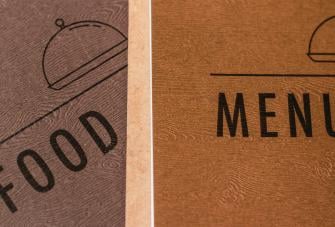7 Menu Changes to Make In Your Restaurant in 2021
Over the last year, there have been big changes in consumer trends. With more people working from home, and capacity restrictions in place, the hospitality industry has struggled to keep up.
Luckily, life should slowly return to normal as more people receive the coronavirus vaccine and government mandates are lifted.
People will want to change up their routines and interact with places that fit their lifestyle
Menu changes to keep an eye on
We spoke with a few service industry professionals to get their input on trends in 2021. See what these experts have to say about eating habits in the upcoming year.
1. Plant-Based Proteins
Healthy eating habits and ethical concerns are encouraging many people to become flexitarians. Instead of feasting on red meat or even chicken, these diners want to make a conscious effort to replace meat when possible.
Chef Gabriel Kreuther is a Michelin-Starred Chef and has won the James Beard Award for Best Chef New York City. He owns Gabriel Kreuther Restaurant & Kreuther Handcrafted Chocolate. Chef Gabriel believes plant-based proteins will get their time in the limelight this year.
According to Chef Gabriel, “we will see more heirloom grains on the menu in 2021, as well as different sources of protein not from animals — mushrooms, nuts and beans.”
This idea is also supported by Starbucks recent shift toward plant-based food. In January of this year, the company tested a location in Seattle that only sold plant-based products. The CEO also called this trend “most dominant shift in consumer behavior,” which is why it tops our list.
2. Local partnerships
Months of isolation at home has taken its toll. We’ve missed birthdays, graduations, block parties, and other local events. Many people miss having a sense of community. They want to interact with others and not awkwardly keep their distance when in stores or on the sidewalk.
The past year has also been a massive group effort to reduce transmission of the virus. Although we are all at home, we are acting in unison to achieve the same goal.
This common mindset and desire to be part of a community could be seen in the restaurant industry as well. Jill Sandin, the Founder and CEO of Jill Sandin Culinary Consulting, stated that partnerships between local businesses may be popular this year.
Jill said to look for examples like:
- Artisanal bakeries working with artisanal cheese and charcuterie producers to make signature sandwiches
- Small organic farms working exclusively with salad concepts
- Burger and chicken concepts working with signature farms
- Small-batch liquor producers working with classic bars and restaurants
- Artisanal noodle producers working with specific ramen and udon houses
3. Low-ABV beverages
Social distancing has affected us differently, but stress and loneliness have taken their toll on many people. Coping with lockdowns and this new way of life has caused many people to indulge in alcohol a little too much. When diners can eat out again, they may be hesitant to drink heavily.
Likewise, young people are not drinking as much as older generations. A recent study found nearly 1/4th of the Generation Z population is completely alcohol abstinent. With more of these young people taking up market share, restaurants and bars will need to cater to their lifestyles to maintain a competitive edge.
Low alcohol drinks will be incredibly more available during the upcoming years. These drinks will allow me to satisfy cravings while being aware of their consumption and health.
4. Say goodbye to the general menu
How do you feel about long menus that cover nearly everything in the book? While some restaurants like The Cheesecake Factory are well-known for offering these, many restaurants will need to get rid of these all-encompassing menus.
Jill Sandin believes diners will want to enjoy simple experiences or high dining, but not an all-in-one menu.
“When guests return to restaurants, they will want to experience their favorite things in environments that are both fun and edgy and romantic and classic”, Jill told us. “So, think the perfect burger, pizza, roast chicken, bowl of ramen...that is fun, no-nonsense, service and design driven, has a great playlist and a convivial environment with reasonable prices and a good attitude!
“Conversely”, Jill explained, “the “High” side will be tasting menus and elite dining experiences by Michelin starred chefs creating one-of-a-kind food complemented by one-of-a-kind beverages and served by experienced hospitality professionals.”
“The middle-of-the-road restaurant that is trying to be all things to all people with massive menus, one-dimensional taste profiles and cavernous dining rooms are a thing of the past. Keep the menu selection small and make sure that every part of the experience is crafted perfectly.”
On top of this, large menus can detract from customer experience by overwhelming the diner with options. Likewise, offering endless options requires you to keep a massive inventory. With the uncertainty of the pandemic still looming, you don’t want to be stuck with dead stock during a shutdown or other restrictions.
5. Weekly items
In the same vein as offering a smaller menu, it might be advantageous to offer more weekly, short-time options. Not only will this give your guests more variety, but it can reduce overhead and wasted inventory.
For example, restaurants that want to reduce costs can buy small quantities of goods instead of committing to large recurring orders. Their stockrooms will be less packed and more flexible in case of market disruptions.
Likewise, if you have goods with short shelf lives, you may not want to leave yourself exposed. While you can still bring in fresh fish, ordering smaller quantities might be the better move.
With these small orders, you can then offer weekly specials to keep the inventory off shelves while also offering a more curated dining experience.
6. Flavorful vegetables
Much like using plant proteins, many people are using vegetables as the main course. Diners may still enjoy meat, but they want to change up how the common meal is served. Instead of a large steak and side of veggies, they want an eggplant parmesan with a side of steak bites.
Some trendy vegetable-heavy dishes include:
- Cauliflower wings
- Mushroom burgers
- General Tso’s cauliflower
- Grain bowls
- Zucchini noodles
7. Experiential meals
People eat out for a variety of reasons, but experience is one of the key factors. Customers want to sit down, enjoy something unique, and satisfy more than simple cravings.
Since we’ve been locked down for nearly a year, diners will want an experience that reminds them of the good old days. After cooking many meals and ordering countless takeout dinners, people will want to patronize a fun, entertaining restaurant.
Some experts say we will see pop-up dining experiences that are reserved and paid for up-front, like purchasing a ticket to a play. In some places, you will even see dining pods that seat 4-6 people and include a personal chef.
When asked about experiental meals, Jill Sandin had this to say: “These dining experiences will be all-inclusive from soup to nuts and include tax and gratuity. Whether it’s a Spanish Paella night that starts with tapas and sherry, a Japanese Kaiseki menu paired with sake, a classic French Bistro menu with complimentary wines and followed by a cheese course, or a pasta tasting menu – these pop ups will be one and done, chef-driven experiences where all decisions are taken out of the hands of the consumer.”
Build the perfect menu and manage your restaurant with Epos Now
Updating your menu with fresh offerings and weekly specials can be a challenge, especially if you use traditional paper menus.
With Epos Now restaurant point of sale systems, it only takes a few taps to add, delete, and edit menu items. Once you make the change on one device, it will update the menu on the entire system.
Since updates occur in real-time, serves using our handheld ordering tablets will see the new menu instantly.
Even better, you can use Epos Now Order & Pay to create an online ordering menu. Customers only have to visit a website or scan a QR code to see your menu, order their meals, and pay.




